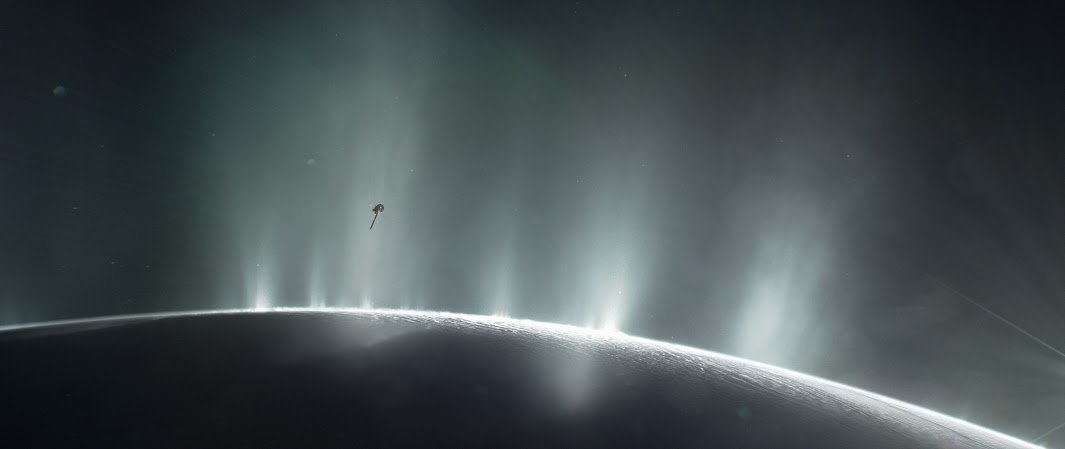
NASA-supported astrobiologists have used computer modeling models to predict the amount of phosphorus present in the ocean of Saturn’s moon Enceladus. The results boost ideas that the moon’s subsurface ocean could be habitable for life as we know it.
In 2005, NASA’s Cassini spacecraft observed Enceladus and spotted plumes of material erupting from the surface near the moon’s south pole. The plumes were found to contain water ice and could be made from material that originates in an ocean of water trapped beneath Enceladus’ icy surface. The potential habitability of Enceladus’ ocean is an important topic of study in astrobiology, and makes the moon one of the Solar System’s most intriguing science destinations for NASA.

Artist impression of NASA's Cassini spacecraft dives through the plume of Saturn's moon Enceladus in 2015.Image credit: NASA/JPL-Caltech/Space Science Institute.
In the new study, researchers used geochemical models and parameters from Cassini data to predict the chemical speciation, solubility, and abundance of phosphorus in Enceladus’ ocean. Phosphorus is essential for life as we know it. It is used in all organisms on Earth to build molecules that store information (like DNA), as well as compounds that store energy (Adenosine triphosphate, or ATP).
On our planet, phosphorus is often a limiting factor for growth in environments, meaning that the limited availability of phosphorus can prevent organisms from growing and reproducing. That is why phosphorus is often used as a fertilizer in industries like agriculture. Excess phosphorus from sources like farming can also seep into bodies of water on Earth and allow for huge blooms of algae.

On July 28, 2015, the Operational Land Imager (OLI) on the Landsat 8 satellite captured images of algal blooms around the Great Lakes, visible as swirls of green in this image of Lake St. Clair.Image credit: NASA Earth Observatory images by Joshua Stevens, using Landsat data from the U.S. Geological Survey.
The new study shows that phosphorus could be more available in Enceladus’ ocean than previously thought. In fact, the results indicate that the moon’s subsurface waters might be rich in dissolved phosphorus, providing further evidence that Enceladus could be habitable and that life in the ocean would not be limited by the availability of this important molecule.
The paper, “Abundant phosphorus expected for possible life in Enceladus’s ocean,“ was published in the Proceedings of the National Academy of Science (PNAS).
Related:
Hao, J., Glein, C.R., Huang, F., Yee, N., Catling, D.C., Hillier, J.K., Hazen, R.M. (2022) Abundant phosphorus expected for possible life in Enceladus’s ocean. PNAS, 119(39). DOI: e2201388119
Cassini Mission
The Chemistry of Enceladus’ Plumes: Life or Not?
Ocean Worlds: Enceladus Looks Increasingly Habitable, and Europa’s Ocean Under the Ice More Accessible to Sample
Icy Moons and Their Plumes
Complex Organics Bubble up from Enceladus
